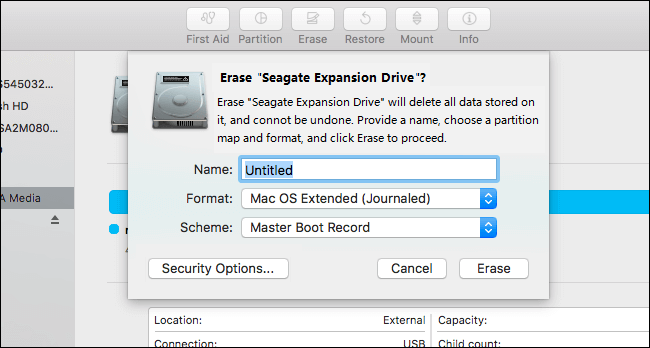
Notes: Some newer Macs with wireless keyboards have timing issues when starting up from any DVD.
#Mac internal hard drive unmounted license#
Click the 'Agree' button on when the DiskWarrior license window appears.
#Mac internal hard drive unmounted mac os x#
Starting Mac OS X from a DVD is a lot slower than from the internal hard drive. See if the internal drive appears in the sidebar, hopefully with more than just "Media." But if you get that same thing as before, select it and run a +Repair Disk+ on the +First Aid+ tab, if possible. Wait 5-10 minutes for your Mac to start from the DVD. This forces startup from the optical drive and takes you to the Installer screen.

If it does not, connect just your keyboard/mouse, insert your Mac OS X installation disc (for the current system release) and restart with the C key held down. Hopefully, it will start up from the internal drive again. Apple The message Disk Not Ejected Properly usually appears when you unplug a cable or disconnect power to a drive without making sure the disk has unmounted from the Finder after selecting it.

Erasing the external hard drive will delete everything on it, so you should copy the files you want to keep to another storage device before the action. Power it up with nothing connected, except for the power cord. Steps to format an external hard drive on Mac/MacBook using Disk Utility (you dont need to boot your computer into Recovery Mode). When you reconnect the power cord, if you have been using an crowded or old power strip (surge suppressor), connect it directly to a wall power outlet, at least initially. Which is basically unplugging ALL cables and power, and reconnecting using a precise procedure. Next, reboot the Mac computer and open Disk Utility > locate and select the unmounted drive > Select Mount at the top menu.

However, if the external hard drive appears in Disk Utility but is unmountable or no volumes of that external drive listed, you got both good news and bad news. First, make sure that your external or internal hard drive is correctly connected to your Mac computer. The usual first steps would be to reset PRAM Macintosh HD, or the MacBook internal hard drive, is basically the startup drive of most Apple computers. If your external hard drive appears there but is not mounted, you can click the Mount icon then the external hard drive will be mounted in macOS Catalina/Mojave. Where is says "Media," it should have a description of the hard drive (such as size and model number) and under the drive should be the volume (usually called +Macintosh HD+ ).


 0 kommentar(er)
0 kommentar(er)
